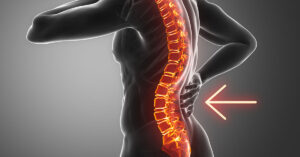Lordosis refers to the inward curvature of the spine, particularly in the lumbar (lower back) and cervical (neck) regions. Ayurvedic treatment for lordosis focuses on balancing the doshas, primarily Vata, and strengthening the spine to correct the curvature. Here are some general Ayurvedic approaches to lordosis treatment:
Dietary Recommendations:
Follow a Vata-pacifying diet, including warm, nourishing, and easily digestible foods.
Incorporate foods rich in calcium and magnesium for bone health, such as leafy green vegetables, dairy products, sesame seeds, and almonds.
Herbal Remedies:
Ayurvedic herbs that support bone health, like Ashwagandha, Shatavari, and Guggul, may be recommended.
External Applications:
Massage the affected areas with warm herbal oils like Mahanarayana oil or Bala oil to improve circulation and nourish the spine.
Herbal Poultices (Upanaha):
Applying warm herbal poultices to the spine may be beneficial for promoting flexibility and reducing stiffness.
Ayurvedic Therapies:
Panchakarma therapies such as Abhyanga (full-body oil massage) and Basti (medicated enema) may be recommended to nourish and strengthen the spine.
Yoga and Exercise:
Practice yoga postures that focus on strengthening the muscles surrounding the spine, including poses like Bhujangasana (Cobra Pose), Setu Bandhasana (Bridge Pose), and Tadasana (Mountain Pose).
Engage in regular exercises that promote core strength and overall flexibility.
